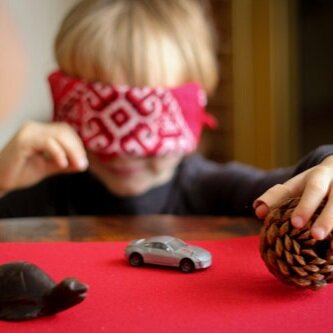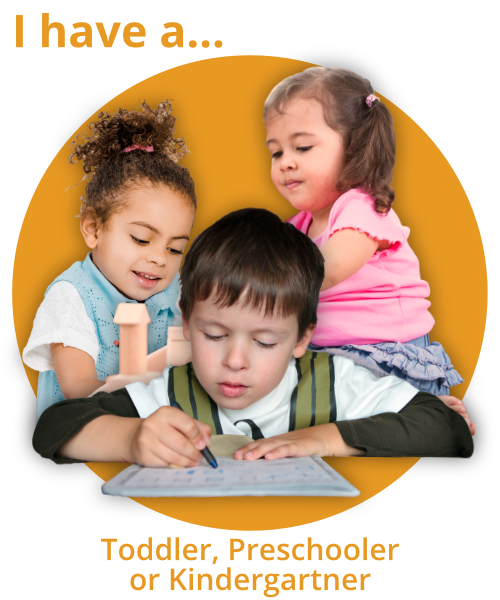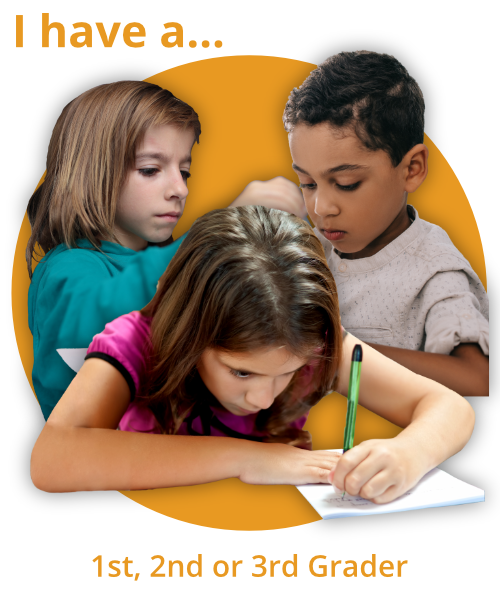I Can See With My Hands: A Sensory Lesson
Ready for the Montessori Stereognostic challenge?
Select a few objects from around the house and lay them on a rug. Next, get a blindfold, dishcloth, bandana, playsilk, or scarf. Tie it around your head so that you cannot see.
Now, gently pick up the first object. Is it rough or smooth? Soft or hard? How many edges or corners do you feel? Is it light or heavy? Talk out loud about your observations so that you can hear your voice describe what you are feeling.
Big Word, Bigger Ideas
Don't let the word "stereognostic" intimidate you. It just means the ability to recognize an object by using your sense of touch. This is an easy Montessori exercise, but before giving it to a child, you should absolutely do it yourself first!
Don't feel silly, just give it a go.
You might be surprised at what you feel when you take the time to truly engage your fingertips. When I felt the pinecone and lifted it up toward my face, I was surprised to find that it had a faintly woodsy smell. I'd never have noticed that if I'd been looking directly at it.
Here's how Maria Montessori described the sensory work in The Discovery of the Child:
These exercises for the stereognostic sense can be widely extended. They are a great delight to the children since they are not concerned with the perception of a single stimulus such as heat, but rather with the reconstruction of a whole, well-known object. They can stroke toy soldiers, marbles, and especially money. They ultimately gain the ability to distinguish objects that are small and closely related, like bird seed and rice. Children are proud of being able to 'see' without using their eyes. Holding out their hands, they will shout: 'Here are my eyes, I see with my hands, I no longer need eyes!' And I often answer their happy cries by saying: 'Well! Let's get rid of our eyes! What else can we do?' This causes them to break out in laughter and cheers.
Tips
Place three objects on a rug or table and do this work yourself in front of the children.
Let a child choose three mystery objects from around the room for you to guess. Is it a pink cube? A colored pencil? A spoon?
Take turns!
Go on a house walk. Hold the child's hand. Can he/she feel the way to the bathroom blindfolded? Stay right with the child to make sure there are no unusual accidents!
Spin the child around pin-on-the-donkey style. Now lead him/her to a large household object...like the refrigerator or couch. What is it? Where are we?
Take this activity outside into your backyard, an empty playground, the zoo, or even into a touchable, child-friendly sculpture garden or children's play area.



